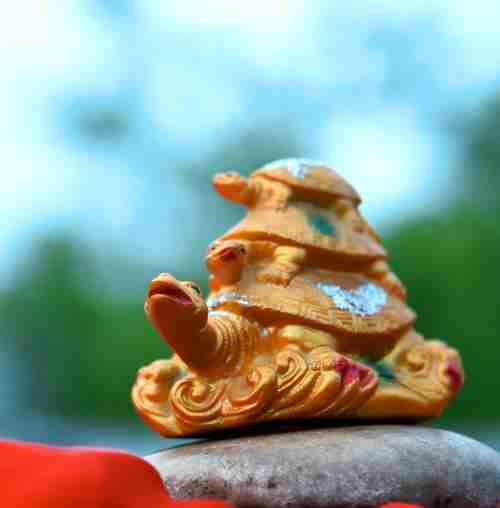Have you ever walked into a space and instantly felt a sense of calm or conversely, unease? Vastu Shastra, an ancient Indian system of architecture and design, aims to create living environments that promote harmony and well-being through the flow of positive energy. While Vastu principles can be intricate, here’s a beginner’s guide to incorporating its core concepts for a more balanced and uplifting home.
See also: What is a Vastu compass? How to use it?
Understanding the essence: Energy and balance
Vastu translates to “dwelling” and Shastra to “science or knowledge.” Essentially, Vastu Shastra is the science of creating a dwelling that fosters well-being. It revolves around the belief that the universe and everything within it possesses energy. A Vastu-compliant home aims to create a harmonious flow of this energy within the living space.

Harness the power of natural elements in your home
To know all about the basics of vastu, here are the most simple tips you need to know.

Light and ventilation
Ensure your home receives ample sunlight, particularly from the east. Large windows and well-placed mirrors can maximise natural light, creating a bright and uplifting atmosphere. Good ventilation is equally crucial. Open windows and strategically placed plants promote the circulation of positive energy and keep the air fresh.
The ‘Five’ elements
Vastu acknowledges five basic elements – earth, water, fire, air and space. Consider incorporating these elements subtly within your décor. Indoor plants represent earth and air, while water features or calming blue tones can represent water. A fireplace or artwork with fiery colors embodies fire and ensuring ample open space allows for the free flow of air and energy.
Embrace the inviting entrance
The main entrance is considered the “energy source” of your home. An east-facing door is ideal, welcoming the morning sun and positive vibes. Keep the entrance clutter-free and well-lit. A well-maintained doormat placed diagonally opposite the entrance is believed to trap negative energy from entering.
See also: Crystal Tree Vastu: Direction and benefits
Strategic room placement
- Living room: The living room, a hub for family bonding and social interaction, should ideally be located in the north or east. Use light and calming colours like blue or green to create a serene atmosphere. Position furniture to encourage conversation and avoid blocking the flow of movement within the space.
- Bedrooms: The master bedroom, ideally situated in the southwest, promotes restful sleep and stability in relationships. Position the bed with the headboard facing south or west for a sense of security. Avoid placing electronics near the bed, as they are believed to disrupt sleep patterns.
- Kitchen: The southeast corner is considered the fire zone, making it the most suitable location for the kitchen. Keep the cooking area clean and organised and avoid placing the stove directly opposite the sink, as they represent opposing elements (fire and water).

Colours and materials
Vastu Shastra prescribes specific colours for different rooms to create desired moods. For instance, light and cool colours like blue or green are recommended for bedrooms to promote peace, while the dining area can benefit from warmer hues like orange or red to stimulate appetite.
Natural materials like wood, cotton and clay are believed to promote positive energy flow. When choosing furniture and décor, opt for natural materials over synthetic ones whenever possible.

Maintaining Harmony
Declutter regularly. Clutter is seen as an obstacle to the free flow of positive energy. Donate or discard unused items and keep surfaces clean and organised. This not only promotes a sense of calm but also allows the positive energy to circulate freely within your home.

Remember: Vastu Shastra is a guide, not a rigid set of rules. Adapt these principles to suit your living space and preferences. The key is to create a home that feels balanced, harmonious and reflects your unique style.
By incorporating these simple Vastu principles, you can create a living environment that fosters well-being, positivity and a sense of balance in your home.
FAQs
Is Vastu Shastra scientific?
Vastu Shastra is based on ancient Indian beliefs and traditions. While there isn't conclusive scientific evidence to support its claims, its principles often align with good design practices – maximising natural light, ventilation and creating a functional layout. Ultimately, Vastu can be a tool to enhance the comfort and harmony within your living space.
What if my main door isn't in the ideal direction?
Don't worry if your main door doesn't face east. Vastu offers remedies for less than ideal placements. For example, keeping the entrance well-lit, using a bright-coloured doormat and placing wind chimes near the entrance are believed to balance the energy flow.
Do I need a Vastu consultant for my home?
A Vastu consultant can provide a more personalised assessment and recommendations for your specific home. However, for beginners, implementing basic Vastu principles like decluttering, maximising natural light and arranging furniture for easy flow can make a significant difference.
Can Vastu principles be applied to apartments?
Absolutely! While some aspects might be limited in an apartment setting, you can still incorporate Vastu concepts. Focus on the placement of furniture within your living space, utilise mirrors strategically to enhance light and position your bed for a sense of security.
What colours should I avoid according to Vastu?
Dark and dull colours are generally discouraged in Vastu as they can create a heavy or gloomy atmosphere. However, the focus is on creating a balanced and uplifting space. If you love a bold colour, use it as an accent wall or in smaller doses.
Can Vastu help with financial prosperity?
Vastu emphasises the importance of keeping the northeast corner of your home clean and clutter-free. This zone is believed to govern financial well-being.
Is Vastu religious?
Vastu Shastra has roots in Hinduism, but its principles can be applied by anyone regardless of religious beliefs. It's a philosophy for creating a harmonious living space that promotes well-being.
| Got any questions or point of view on our article? We would love to hear from you. Write to our Editor-in-Chief Jhumur Ghosh at jhumur.ghosh1@housing.com |






